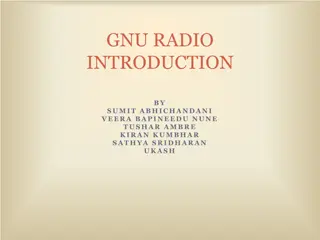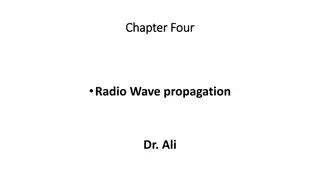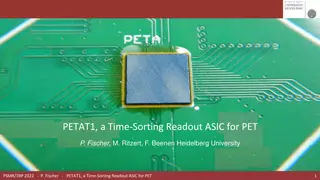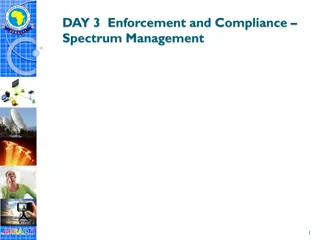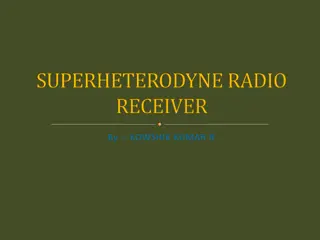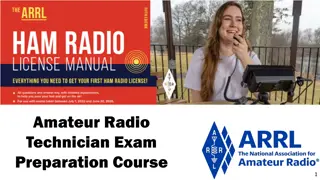Radio Frequency Readout Device (RFRD) for Tightness Measurement of Anchor Bolts
The Radio Frequency Readout Device (RFRD) Phase II project aims to reduce the time needed to check the tightness of nuts on anchor bolts. By utilizing a passive RFRD that measures capacitance changes in washers, the system offers a wireless, cost-effective solution for monitoring nut tightness. With a focus on functional and non-functional requirements, as well as unique market positioning, the project showcases innovation in bolt tightness measurement technology.
Download Presentation

Please find below an Image/Link to download the presentation.
The content on the website is provided AS IS for your information and personal use only. It may not be sold, licensed, or shared on other websites without obtaining consent from the author.If you encounter any issues during the download, it is possible that the publisher has removed the file from their server.
You are allowed to download the files provided on this website for personal or commercial use, subject to the condition that they are used lawfully. All files are the property of their respective owners.
The content on the website is provided AS IS for your information and personal use only. It may not be sold, licensed, or shared on other websites without obtaining consent from the author.
E N D
Presentation Transcript
Radio Frequency Readout Device (RFRD) Phase - II Fall 2017
Group 11 Advisors Dr. Daji Qiao Dr. Nathan Neihart Students Bailey Akers Colin Sunderman Nathan Mulbrook Lyle Bishop Pengyu Qu Graduate Students Scott Melvin Chengrui Yang
Problem Statement Purpose: To reduce the time it takes to check tightness of nut on anchor bolts Each nut is torqued manually to check tightness Solution: Create an Radio Frequency Readout Device (RFRD) Passively powered from the RF reader Measures tightness of the nut by measuring the capacitance of two washers As nut loosens, capacitance decreases Washer has tag attached
Functional Requirements Wireless operation Passively powered tag Measure capacitance of washers Send data back to reader Operating environment Not addressed in this design
Non-Functional Requirements Conforms to FCC Regulations ISM (902-928MHz) Size Components have potential to be scaled down in future revisions Reasonable cost
Market Survey RFRD Readers and Tags Implemented in market products Measuring bolt tightness using RFRD Implemented in certain research applications Our application is unique in measuring bolt tightness By measuring capacitance of the washers
Design Groups Capacitance Measuring Bailey Akers and Colin Sunderman Antenna and Power Harvesting Lyle Bishop and Pengyu Qu RFRD Communication Protocol / Microcontroller Nathan Mulbrook
Capacitance Measurement Functional Requirements Operate with low power Antenna team research Approximately 0.45mW expected Measure capacitance from 20pF to 50pF LCR measurements performed on washer
Relaxation Oscillator Creates a PWM signal Period is dependent on capacitance
Relaxation Oscillator VTH VTH = Vout/2, if Ra = Rb and Vref = 0 Vi > VTH, then Vout = VL- Vi < VTH, then Vout = VL+
Comparator TS881 Manufacturer: STMicroelectronics Low power comparator Supply voltage 0.85 V to 5.5 V 220 nA typical supply current No load, output high Operates at approximately 1 uW Assuming +/- 1.8 V supply SPICE model
Simulation Calculated Period: T = 55us for C = 50pF T = 33us for C = 30pF
C = 50pF Simulated: T = 53us Calculated: T = 55us
C = 30pF Simulated: T = 35us Calculated: T = 33us
Conclusion The relaxation oscillator allows us to calculate the capacitance Can use Ra and Rb to control the voltage the capacitor charges to Can use R and C to control the period of the pulse widths
Capacitance Measurement Test Plan Prototype the design on breadboard Test for different values of capacitances and resistors and verify that results are consistent Tune the oscillation frequency Balance power, microcontroller design, and quality of measurement Find the amount of power consumed
Antenna Design Inverted F antenna More compact Microstrip format 900MHz Estimated power from similar applications Fractal loop antenna
Antenna Test Plan Simulating antenna design in ADS Creating rectifier in PSpice
Future Plans Antenna simulation Tune antenna to 900 MHz Need to simulate rectifier PSPICE Couple rectifier to antenna ADS Possible backscatter implementation
RFRD Communications Design Radio Transmitter Send power to the tag SDR Receives data from tag GNU Radio Process received signal
RFRD Communications Requirements Unique Identifiers for Tag Transmission integrity Checksum Microcontroller Low power
Project Status Capacitance Measuring Simulated design with TS88 Ordered TS881 Breadboard prototype Antenna DN023 Inverted-F design Simulating using ADS software RFRD Communication Protocol Plan for implementation
Future Plans Capacitance Measuring: Build circuit and test Antenna Design: Simulate antenna Design and simulate a rectifier Communications Design: Implement receiver in GNU Radio Write software for microcontroller
References Liu, Yili, et al. Limitations of a relaxation oscillator in capacitance measurements. IEEE Transactions on Instrumentation and Measurement, vol. 49, no. 5, 2000, pp. 980 983., doi:10.1109/19.872917. Tuttle, Dr. Gary. Non Linear Oscillators. EE 230 Website, Dr. Gary Tuttle, tuttle.merc.iastate.edu/ee230/topics/op_amps/non_linear_oscillators.pdf. TS881 Rail-To-Rail 0.9 V nanopower comparator. www.st.com/content/ccc/resource/technical/document/datasheet/a2/60/ 3e/5d/b2/c1/4a/e9/DM00057901.pdf/files/DM00057901.pdf/jcr:content/ translations/en.DM00057901.pdf. Zeng, Miaowang, et al. A Compact Fractal Loop Rectenna for RF Energy Harvesting. IEEE Antennas and Wireless Propagation Letters, vol. 16, 2017, pp. 2424 2427., doi:10.1109/lawp.2017.2722460. Kervel, Fredirk. 868 MHz, 915 MHz and 955 MHz Inverted F Antenna. www.ti.com/lit/an/swra228c/swra228c.pdf.






